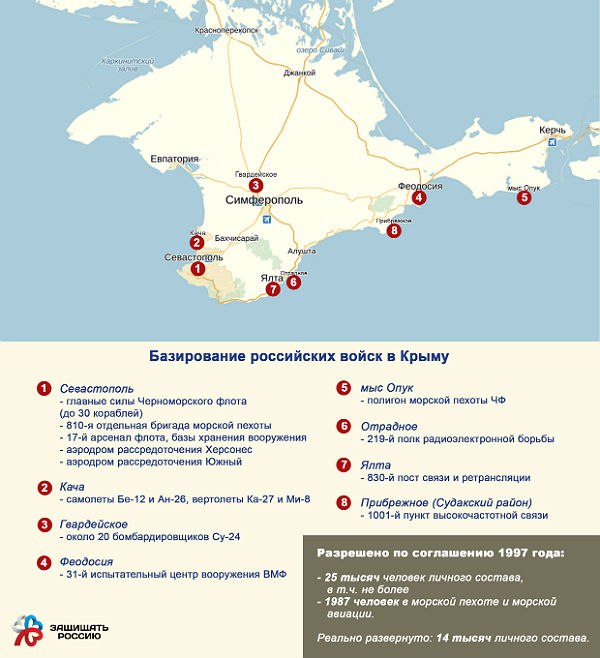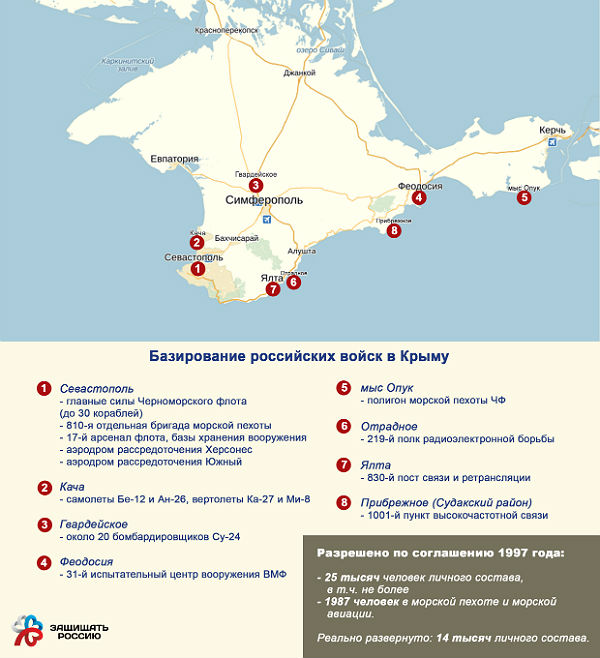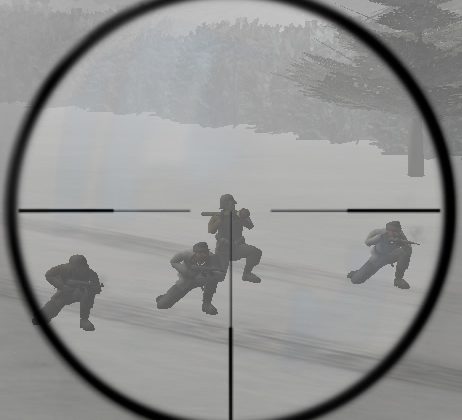The Russian military analyst Prokhor Tebin has put together a very useful article explaining Crimea’s military significance for Russia. He highlights the Black Sea’s economic significance for Russia: Russia’s Black Sea commercial ports carry 30 percent of its total maritime exports. The Black Sea also provides the closest access for Russia to the Mediterranean Sea and Indian Ocean, which is important for both economic and geopolitical reasons. Tebin points out that the Black Sea Fleet is needed to ensure that access, as well as to deal with potential instability in the Caucasus. It will also serve as a logistics hub for the Mediterranean task force that the Russian navy has decided to form, though ships for the task force will come from other fleets as well. He ranks the fleet third in importance for the Russian Navy, behind the Northern and Pacific Fleets, but ahead of the Baltic Fleet and the Caspian Flotilla.
The composition of the fleet is currently inadequate for its missions. It has only a few old Soviet-era ships: one missile cruiser, three frigates, seven large amphibious ships, and one diesel submarine. It has not received any new combat ships since 1990, while almost all of its existing ships will need to be decommissioned fairly soon. Tebin compares the strength of the BSF to the Turkish navy, which includes 16 frigates, 8 corvettes, and 14 diesel submarines, with more ships on the way. To change the situation, Russia is currently building six new Talwar-class frigates and six improved Kilo class diesel submarines for the BSF. The fleet may also get some small missile ships and gunboats, as well as new minesweepers. Tebin considers this an absolute minimum for the BSF and argues that it will still not be enough to fulfill all of the fleet’s missions or to restore the balance of power in the Black Sea. He also calls for the development of additional shore-based infrastructure, especially in Novorossiisk. However, the latter port is inferior in location and climate conditions to Sevastopol, being subject to the extremely strong wind known as Bora. This relatively unpredictable wind, with speeds registered at over 200km/hour, has in the past damaged ships at pier. The location of Novorossiisk is also far less central than Sevastopol and the harbor is inferior. For these reasons, Tebin argues that Novorossiisk can only serve a complementary role for the Black Sea Fleet, while Sevastopol must remain its main base for the foreseeable future.
In addition, Tebin also provides a very nice map of Russian military facilities in Crimea, which I reproduce below.
The legend reads as follows:
The 1997 agreement permits a maximum of 25,000 personnel, including no more than 1,987 naval infantry and naval aviation personnel. 14,000 are actually deployed.
1) Sevastopol: main Black Sea Fleet forces, up to 30 ships; 810 naval infantry brigade; 17th arms storage facility, Khersones and Yuzhnyi airfields.
2) Kacha airfield: Be-12 and An-26 aircraft, Ka-27 and Mi-8 helicopters.
3) Gvardeiskoe airfield: 20 Su-24 bombers.
4) Feodosiia: 31st naval armaments testing center.
5) Cape Opuk: naval firing range.
6) Otradnoe: 219th radio-electronic warfare regiment.
7) Yalta: 830th communications post.
8) Priberezhnoe: 1001st high-frequency communications post.
——————-
This comment is also available on Russian Military Reform.












